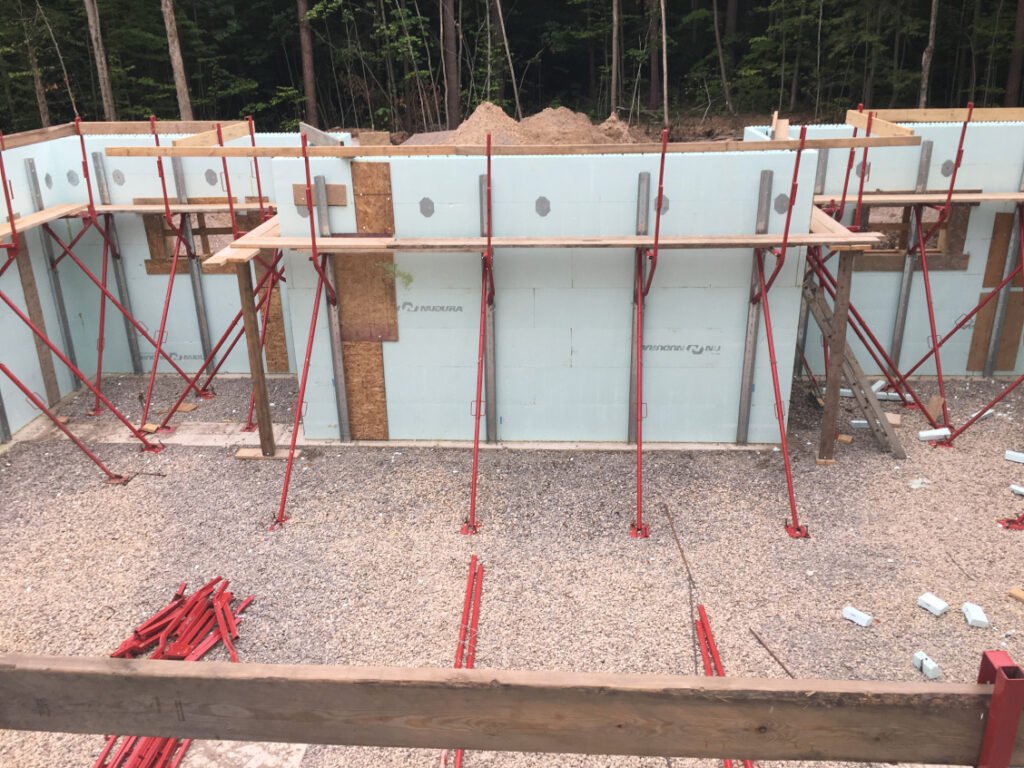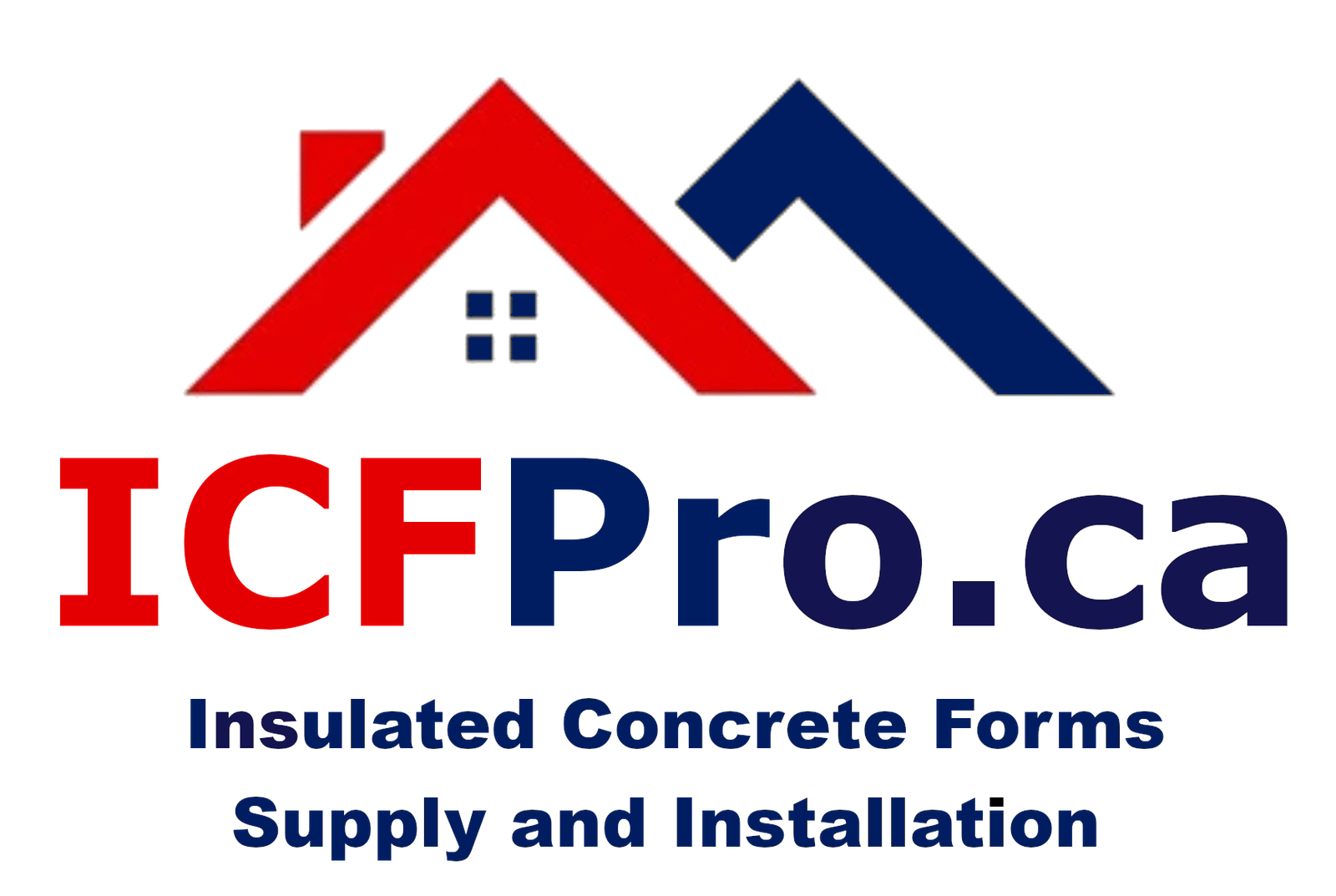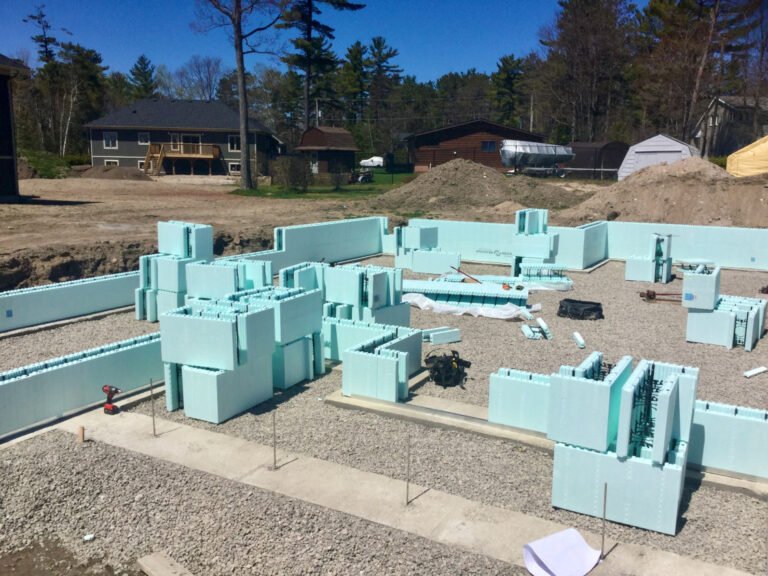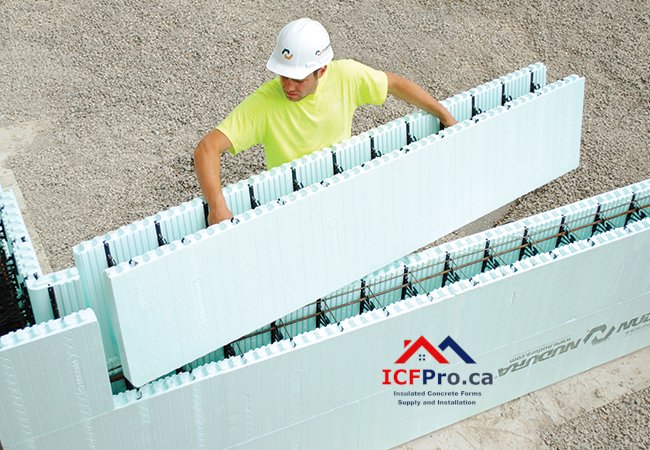ICFPro.ca is a division of ICFhome.ca - Phone 1 866 868-6606 - Direct Line 1 705 533-1633 - Email: info@icfhome.ca
ICF Foundation

ICF Foundations: The Comprehensive Guide to Unmatched Durability and Efficiency
Introduction
In an era where climate resilience and energy efficiency are paramount, Insulated Concrete Form (ICF) foundations emerge as a revolutionary solution. This guide delves deep into every facet of ICF foundations, offering a 360-degree view of their benefits, construction processes, and long-term value.
1. The Anatomy of ICF Foundations: Beyond the Basics
EPS Foam Insulation
- Density Matters: High-density EPS (2.5–3.0 lb/ft³) resists soil pressure and provides superior insulation. Companies like Logix and Nudura offer specialized blends with graphite infusion for enhanced thermal performance (R-values up to R-24).
- Environmental Impact: EPS is recyclable and often incorporates up to 30% recycled content. Innovations in bio-based foams, such as hemp or soy derivatives, are emerging.
Reinforced Concrete Core
- Strength Grades: 4,000 PSI concrete is standard, while 5,000 PSI is used in seismic zones. Fiber-reinforced concrete (FRC) with steel or polypropylene fibers adds crack resistance.
- Pouring Techniques: Tremie pipes ensure even distribution in deep foundations, minimizing voids.
Steel Rebar Grid
- Seismic Design: In earthquake-prone areas (e.g., California), rebar spacing tightens to 6” vertical/12” horizontal. Epoxy-coated rebar prevents corrosion in coastal regions.
Integrated Systems
- Waterproofing: Hybrid systems like Tremco’s Tuff-N-Dry combine spray-applied membranes with drainage panels, offering 30-year warranties.
- Radon Mitigation: Sub-slab depressurization systems with PVC piping are pre-installed, reducing radon levels by 99%.
2. Construction Timeline: A Day-by-Day Breakdown
Day 1–2: Site Preparation
- Excavation: Laser-guided machinery ensures precision. For sloped lots, stepped footings are engineered.
- Footings: ICF-specific footings (24” wide) are reinforced with #5 rebar. Embedded radiant heating tubes are installed for heated floors.
Day 3–7: Wall Assembly
- Block Stacking: Interlocking teeth ensure alignment. Bracing systems (e.g., Nudura’s SnapTrack) are adjusted every 4 feet.
- Utility Rough-Ins: Conduits for electrical/plumbing are pre-placed using BIM software to avoid rebar clashes.
Day 8–9: Concrete Pour
- Pour Schedule: Concrete is pumped in 4’ lifts, with vibrators eliminating air pockets. Temperature-controlled pours prevent cold joints in sub-32°F conditions.
Day 10: Waterproofing & Backfill
- Exterior: Peel-and-stick membranes (e.g., Grace Ice & Water Shield) are applied.
- Backfill: Clean gravel is used to promote drainage, with geotextile fabric preventing soil intrusion.
Comparison to Traditional Foundations
| Task | ICF Time | Traditional Time |
|---|---|---|
| Formwork | 0 days | 5 days |
| Insulation Installation | 0 days | 3 days |
| Total | 10 days | 20 days |
3. Long-Term Maintenance: A 50-Year Outlook
ICF vs. Traditional Maintenance
| Task | ICF Frequency | Traditional Frequency |
|---|---|---|
| Crack Inspection | Never | Annual |
| Waterproofing Reapplication | 20 years | 5–10 years |
| Mold Remediation | Never | Biannual in damp climates |
Case Study: A 1995 ICF home in Minnesota showed no structural degradation after 28 years, with energy bills 45% lower than neighboring homes.
4. Weather Resilience: Engineering for Extremes
Cold Climates
- Arctic Adaptations: In Alaska, heated enclosures and calcium chloride accelerators allow pours at -20°F. Frost-protected shallow footings (FPSF) reduce excavation depth.
Hurricane Zones
- Flood Testing: ICF walls withstand hydrostatic pressure equivalent to 10’ flood depths. Post-Hurricane Ian surveys in Florida showed 98% of ICF homes intact vs. 62% traditional.
Seismic Performance
- Testing Standards: ICF walls meet IRC Section 608 and CBC 1905.1.15 codes, withstanding simulated 7.5 magnitude quakes in UC Berkeley trials.
5. Cost Analysis: A 30-Year Financial Perspective
Upfront Costs
| Component | ICF Cost | Traditional Cost |
|---|---|---|
| Materials | $12,000 | $8,000 |
| Labor | $18,000 | $10,000 |
| Energy Upgrades | $0 | $4,000 (spray foam) |
Long-Term Savings
- Energy: $1,500/year savings (Source: U.S. DOE).
- Insurance: 20% discount (State Farm, Allstate).
- Resale: 8–12% premium (National Association of Realtors).
ROI Calculation:
- Total 30-Year Savings: 45,000(energy)+45,000(energy)+15,000 (insurance) + 40,000(resale)=∗∗40,000(resale)=∗∗100,000**.
6. Materials Deep Dive: Innovations & Best Practices
Concrete Innovations
- Self-Healing Concrete: Basilisk Healing Agent seals cracks up to 0.8mm wide.
- CarbonCure: Injects recycled CO2 into concrete, reducing carbon footprint by 5%.
EPS Advancements
- Fire Resistance: ASTM E84 Class 1 rated foams with flame retardants like hexabromocyclododecane (HBCD).
Rebar Alternatives
- GFRP (Glass Fiber Reinforced Polymer): Non-corrosive, ideal for coastal areas.
7. Global Case Studies
Norway’s Arctic Housing
- Project: 50 ICF homes in Tromsø.
- Result: 60% energy reduction vs. wood-frame, withstanding -40°F winters.
Japan’s Earthquake Resistance
- Study: 2011 Tohoku earthquake: Zero structural failures in 200 ICF buildings.
8. The Future: 2030 and Beyond
Smart Foundations
- Sensors: Triax Technologies’ wireless sensors monitor stress and moisture, alerting via IoT platforms.
Carbon-Neutral Materials
- EC3 Calculator: Tracks embodied carbon in ICF production, promoting net-zero goals.
3D-Printed Forms
- COBOD’s BOD2: Prints ICF blocks onsite, reducing waste by 30%.
9. FAQs Expanded
Q: Can I retrofit an existing home with ICF?
- A: Yes! “ICF skirts” wrap existing foundations, though excavation is required.
Q: Are ICF homes compatible with modern design?
- A: Architects like Frank Lloyd Wright’s successors use ICF for curved walls and cantilevers.
10. Environmental Impact & Certifications
LEED Credits
- ICF contributes to 7 LEED points: Energy (4), Materials (3).
Living Building Challenge
- ICF’s airtightness and thermal mass align with Petal Certification standards.
Conclusion: Building Legacy with ICF
ICF foundations are not merely a construction choice but a legacy of resilience, efficiency, and foresight. From the Arctic Circle to hurricane alleys, they redefine what a foundation can achieve. As innovations like self-healing concrete and 3D printing evolve, ICF stands poised to dominate 21st-century construction.
Final Word: In a world of climate uncertainty, ICF foundations are the bedrock of tomorrow’s sustainable homes.



